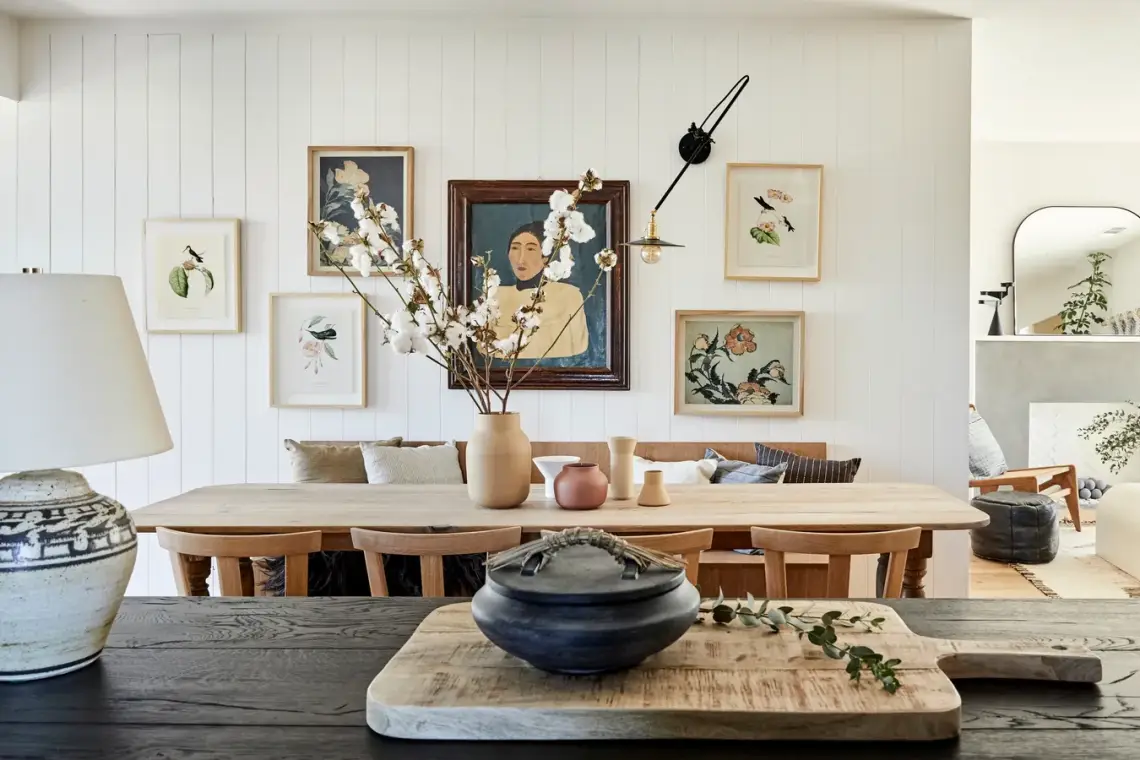In recent years, the world of interior design has seen a growing interest in simplicity, sustainability, and creating spaces that promote a sense of calm. At the forefront of this movement is Japandi style—a design philosophy that masterfully combines the elegance of Japanese minimalism with the inviting warmth of Scandinavian design.
This unique hybrid style brings together the best of two distinct cultures, both of which prioritize functionality, beauty in simplicity, and a deep connection to nature. While Japanese design, rooted in the concept of wabi-sabi, finds beauty in imperfection and impermanence, Scandinavian design, driven by the idea of hygge, celebrates coziness and comfort. Together, they create a harmonious aesthetic that feels serene, purposeful, and timeless.
If you’ve ever wanted to transform your home into a tranquil retreat while maintaining a sense of coziness and functionality, Japandi might just be the style for you. Let’s dive deeper into the principles of Japandi and discover how you can incorporate this beautiful aesthetic into your own home.

The Core Principles of Japandi Design
At its heart, Japandi style is about intentional living. Every piece of furniture, every texture, and every decorative element serves a purpose, creating a space that feels both calm and cohesive. Here are the key principles that define the Japandi aesthetic:

1. Minimalism with Meaning
Japandi design is a celebration of minimalism, but it’s not about empty spaces or stark interiors. Instead, it focuses on curating meaningful pieces that enhance the functionality and aesthetics of a space. Think of decluttered rooms with carefully chosen furniture that exudes simplicity, elegance, and practicality.

2. A Natural Palette
The Japandi color palette is inspired by nature, featuring muted, earthy tones such as soft beige, warm gray, sage green, and charcoal black. These soothing shades create a sense of balance and tranquility, while occasional pops of deep blue or terracotta add a touch of warmth and visual interest.

3. Organic Materials
Natural materials play a vital role in Japandi interiors. From raw wood and bamboo to linen, clay, and stone, the focus is on using materials that feel grounded and authentic. These elements not only add texture and depth but also strengthen the connection to the natural world—a cornerstone of both Japanese and Scandinavian design.

4. Sustainability and Craftsmanship
Japandi values sustainability and the art of craftsmanship. Handmade items, whether it’s a hand-thrown ceramic vase or a wooden bench crafted by a local artisan, are highly valued for their uniqueness and authenticity. By investing in quality, timeless pieces, Japandi encourages a slower, more thoughtful approach to consumption—one that prioritizes durability over fleeting trends. This emphasis on sustainability not only aligns with modern eco-conscious living but also reinforces the idea of creating a home that feels personal and enduring.

5. Harmony Through Balance
In Japandi interiors, balance is everything. The clean lines and symmetry of Scandinavian design pair seamlessly with the asymmetry and imperfect beauty celebrated in Japanese wabi-sabi. This interplay between order and imperfection results in spaces that feel visually interesting yet completely at ease.

6. A Functional and Calm Space
Functionality is a key aspect of Japandi design. Every piece of furniture and decor serves a purpose, ensuring that spaces are not only beautiful but also practical. This simplicity extends to how spaces are organized—open layouts, smart storage solutions, and uncluttered surfaces create a sense of calm and allow you to focus on what truly matters.

How to Incorporate Japandi Style into Your Home
Bringing Japandi style into your space doesn’t require a complete overhaul. Here are some practical steps to get started:
1. Declutter and Simplify
Begin by clearing out unnecessary items and focusing on what you truly need and love. Remember, Japandi is about quality over quantity, so opt for fewer pieces that serve a purpose and bring joy.

2. Stick to a Neutral Color Palette
Choose soft, natural tones for your walls, furniture, and decor. Neutral hues like beige, ivory, and muted grays create a serene backdrop, while deeper tones like charcoal or forest green can be used for contrast.

3. Incorporate Natural Materials
Look for furniture and decor made from wood, rattan, bamboo, or stone. Add linen or cotton fabrics for softness, and bring in texture with woven rugs or cushions. These materials add warmth and a tactile quality to your space.

4. Invest in Timeless Furniture
Opt for furniture with clean lines and a minimalist aesthetic. Low-profile sofas, mid-century-inspired chairs, and sleek wooden tables are staples of Japandi design. Pieces that blend form and function—like a bench that doubles as storage—work particularly well.

5. Embrace Imperfection
Introduce handmade elements that showcase the charm of imperfection. A ceramic bowl with subtle glazing variations or a handwoven basket adds character and authenticity to your home.

6. Bring in Nature
Plants are a simple way to bring life and vibrancy to Japandi interiors. Choose greenery with clean lines and sculptural shapes, like a fiddle-leaf fig or a monstera plant, and place them in neutral pots made from ceramic or terracotta.

7. Create Cozy Layers
While minimalism is key, Japandi doesn’t sacrifice comfort. Add soft textiles like throws, cushions, and area rugs in natural fibers to create a welcoming and cozy atmosphere.

Why Japandi is More Than a Trend
What makes Japandi so appealing is its timelessness and focus on well-being. This style encourages mindful living by promoting spaces that are not only beautiful but also calming, functional, and sustainable. In an increasingly fast-paced and cluttered world, Japandi offers a sanctuary—a reminder to slow down, live intentionally, and find beauty in simplicity.
Whether you’re redesigning an entire home or simply refreshing a single room, Japandi style provides a roadmap to create a space that feels like a retreat. By blending Japanese minimalism with Scandinavian comfort, you’ll achieve a design aesthetic that is elegant, inviting, and truly timeless.
Photos by: architecturaldigest.com & fancyhouse-design.com
Also Read:
















